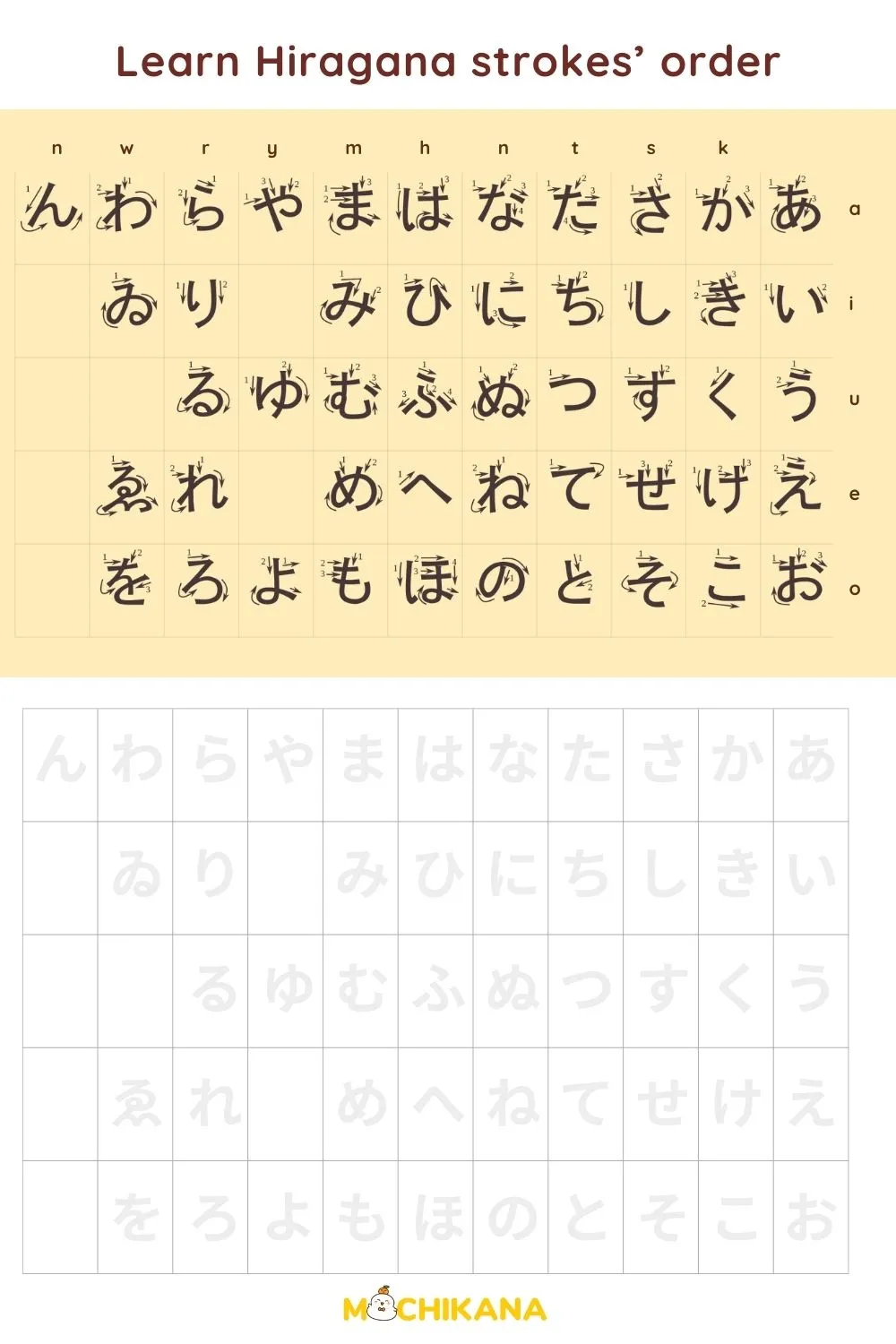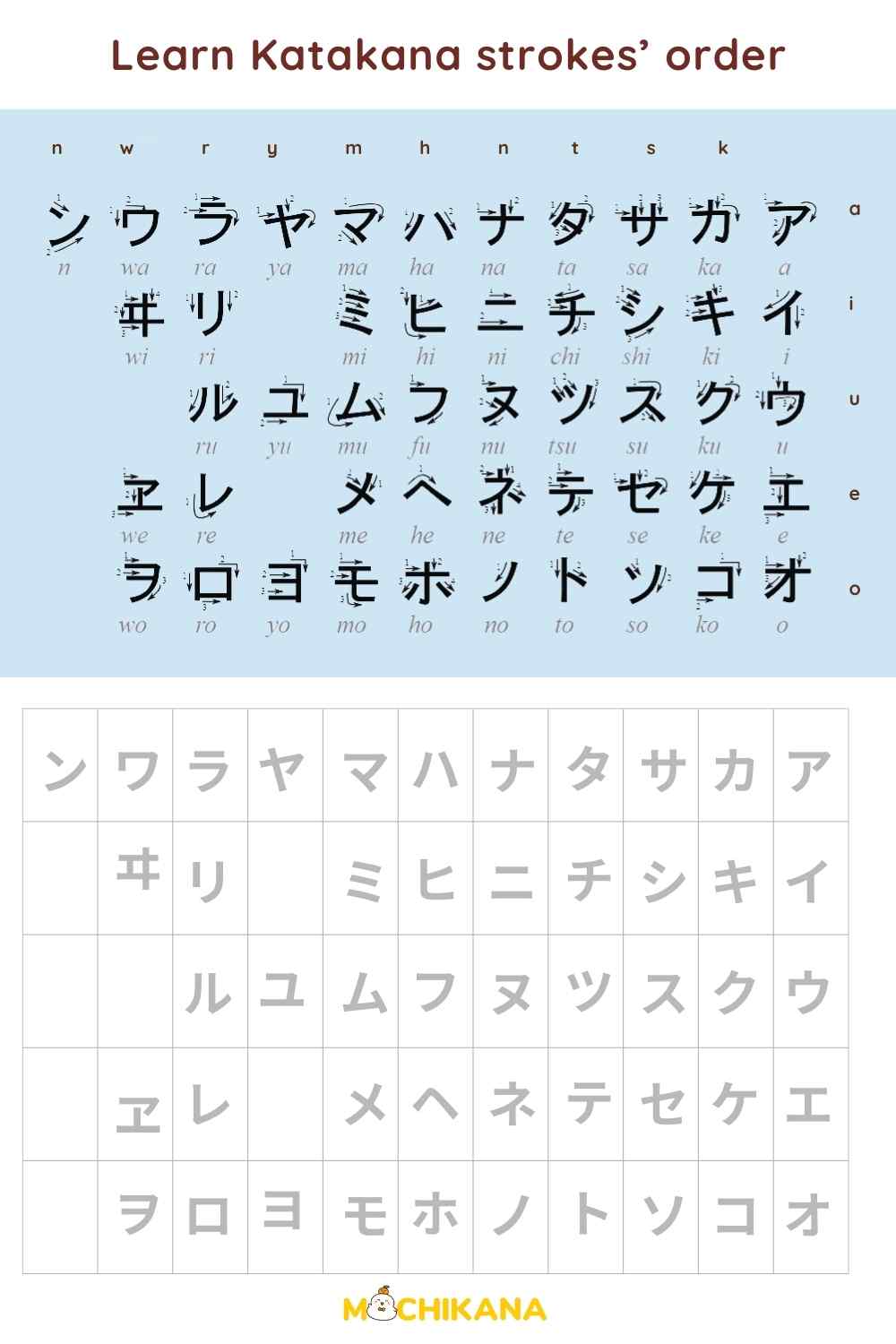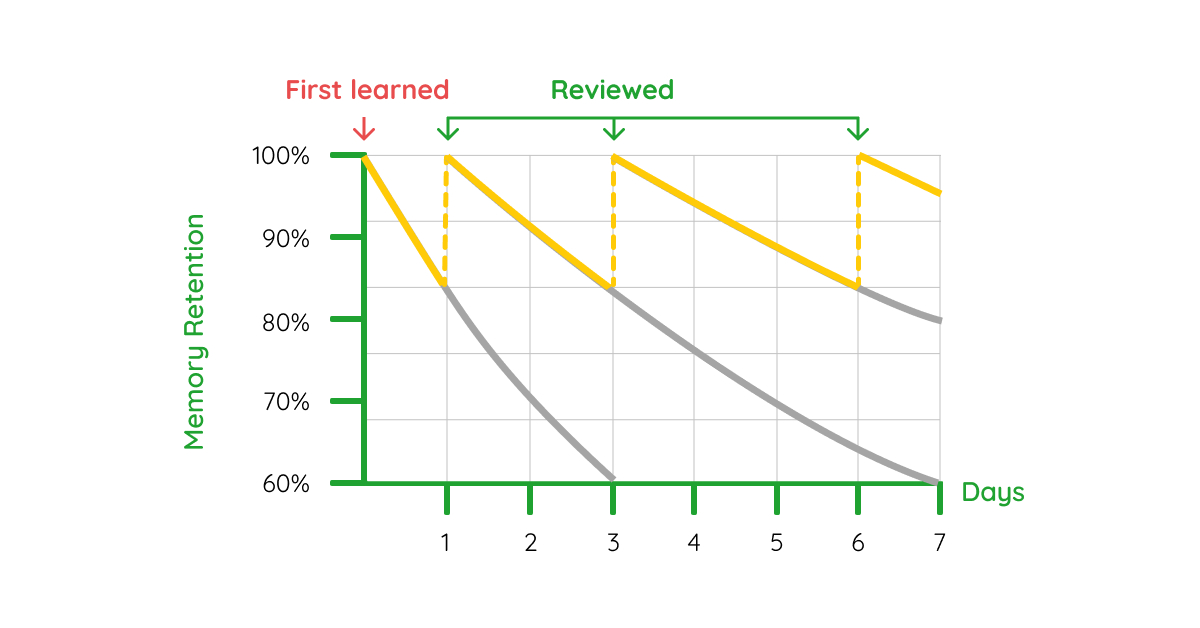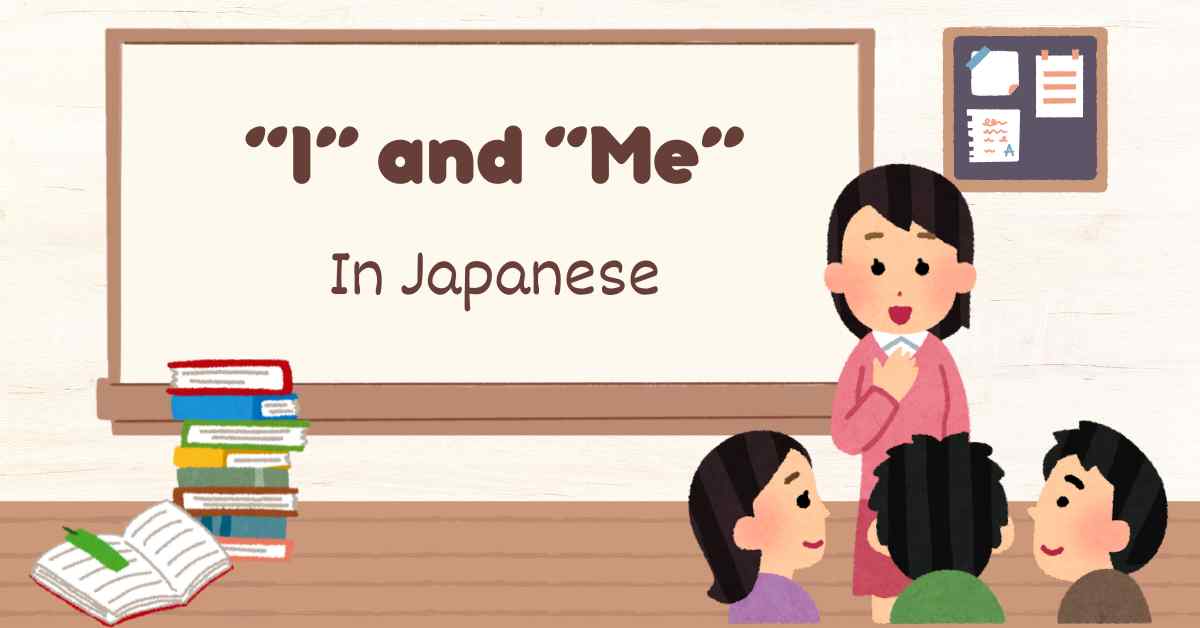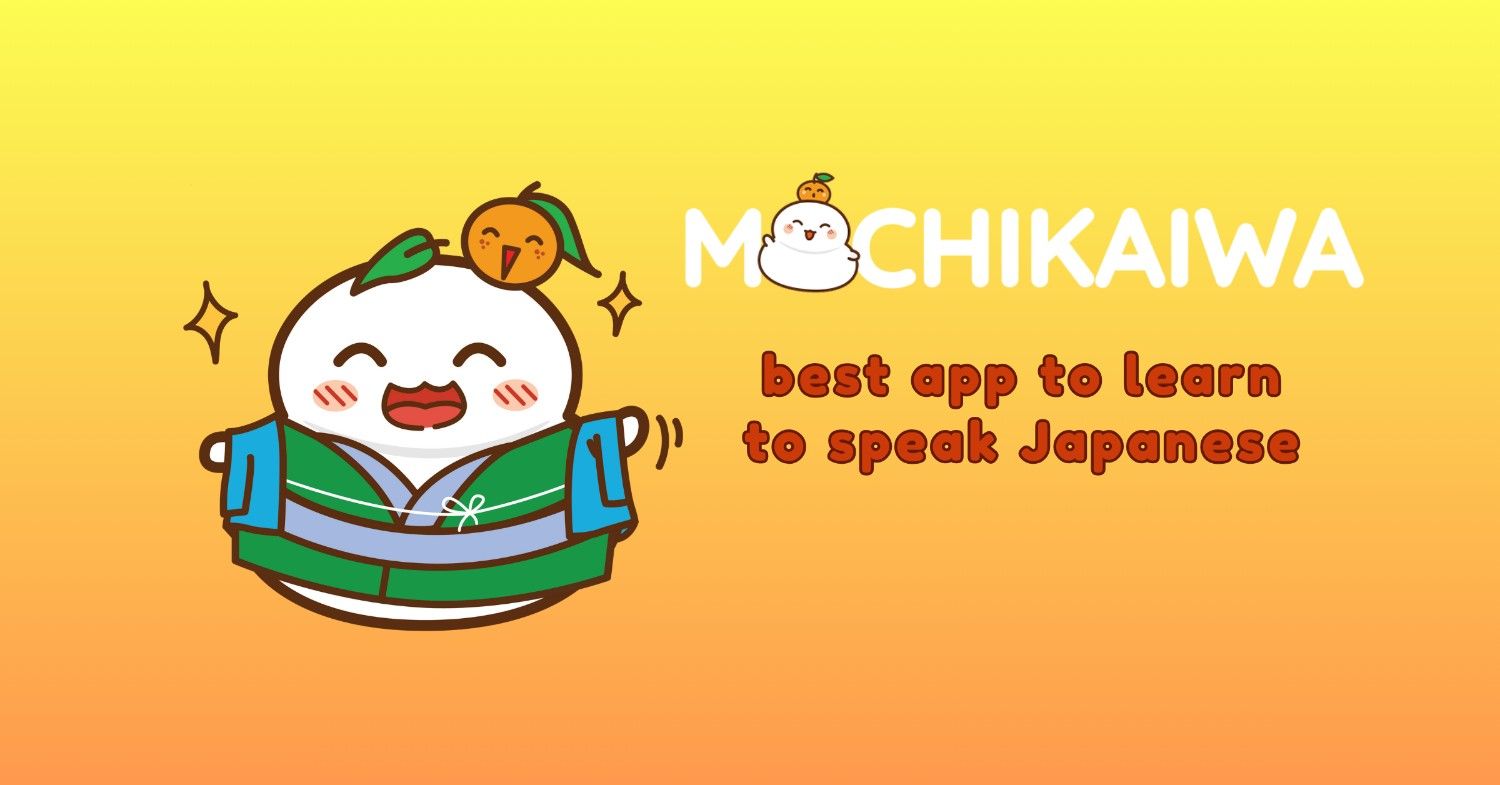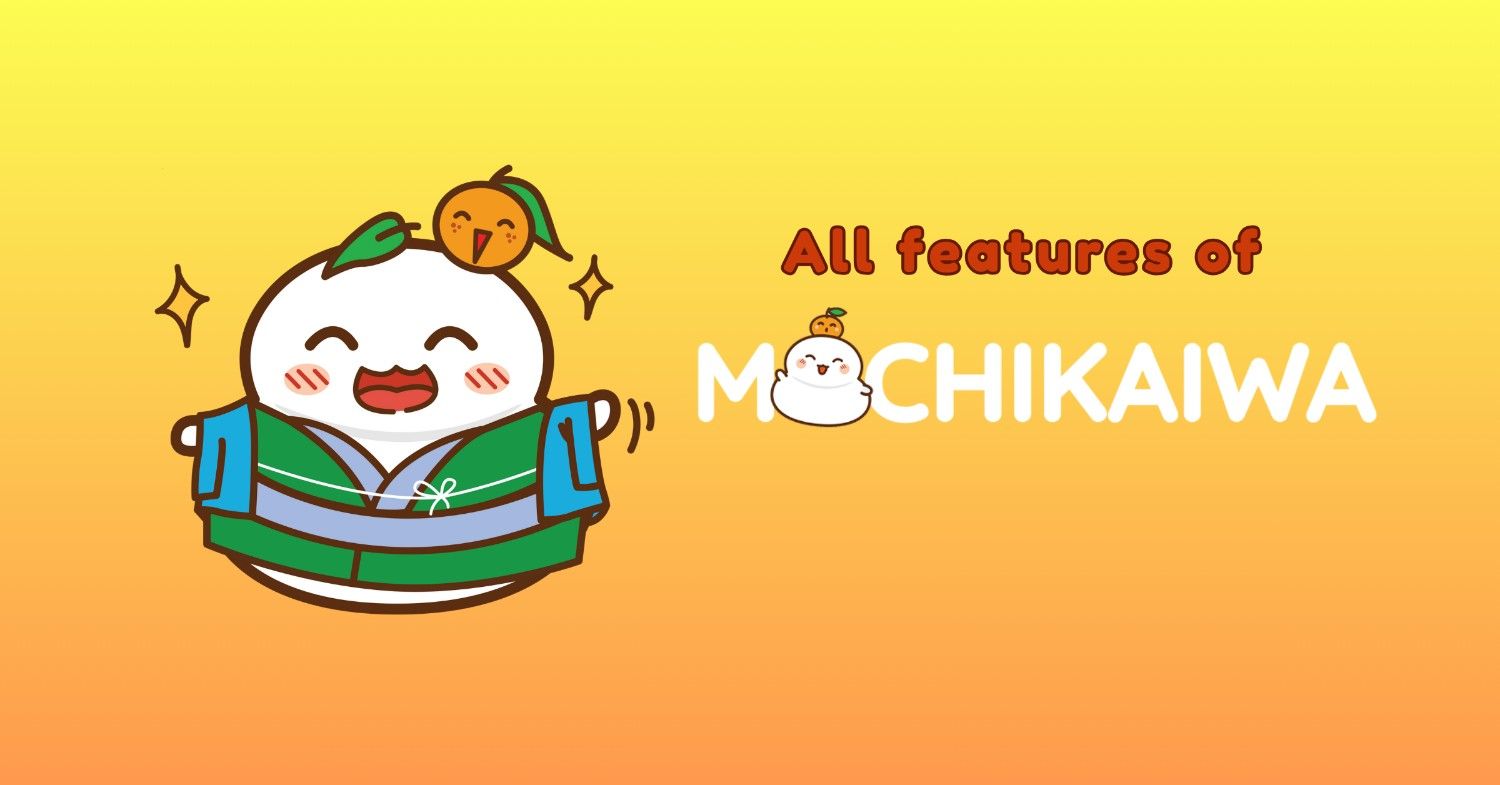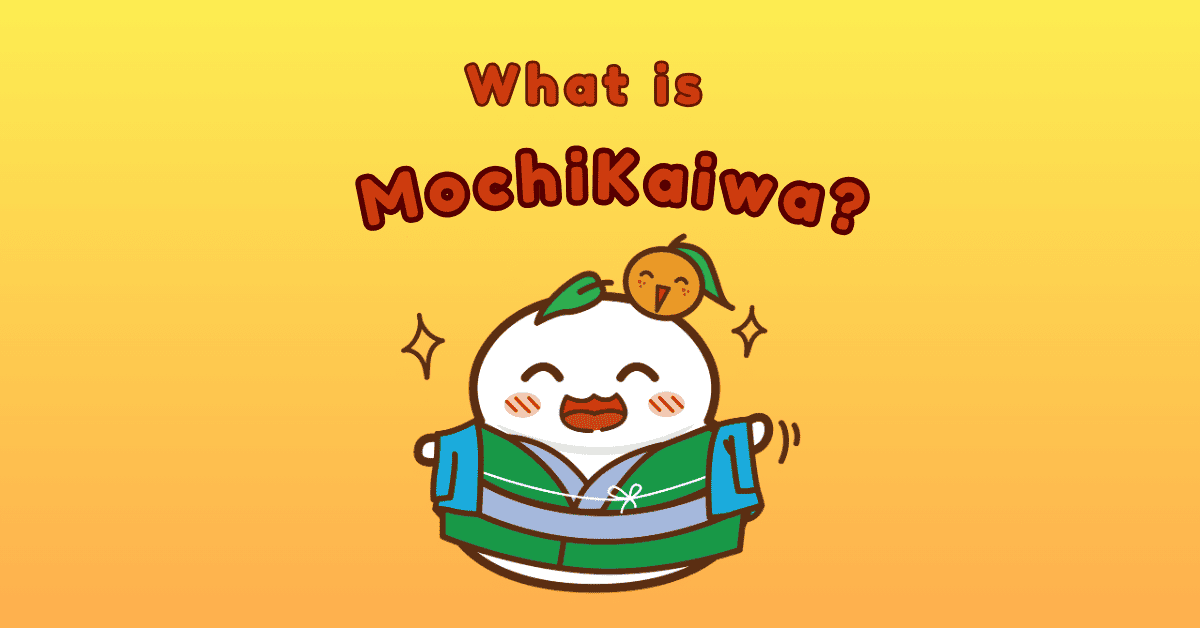Learning how to write Japanese can be both exciting and challenging for beginners. The Japanese writing system is unique, consisting of three different scripts: Hiragana, Katakana, and Kanji. Each script has its own set of characters and uses, making it essential to understand and master all three to become proficient in Japanese. In this guide, we’ll introduce you to the Japanese writing system and provide detailed steps on how to write each script.

About Japanese Script
Hiragana
Hiragana is one of the foundational scripts in the Japanese writing system. It consists of 46 basic characters, each representing a syllable. Hiragana is primarily used for native Japanese words, grammatical functions, and verb conjugations. It’s often the first script that Japanese children and beginners learn.
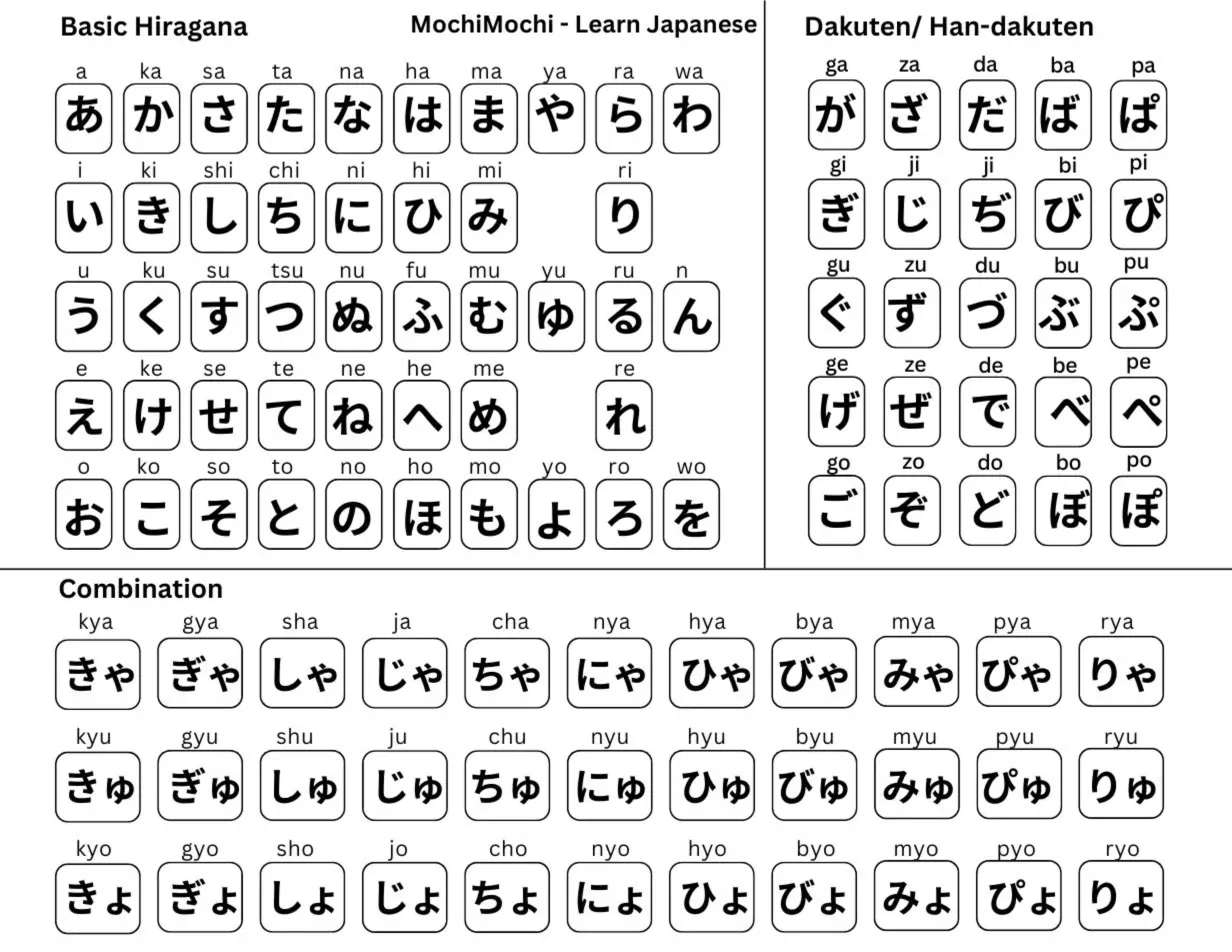
Katakana
Katakana chart is another essential syllabary in Japanese, also comprising 46 basic characters. The Katakana system is used mainly for foreign loanwords, names, technical terms, and for emphasis. Its characters are more angular and sharp compared to the more curved Hiragana.
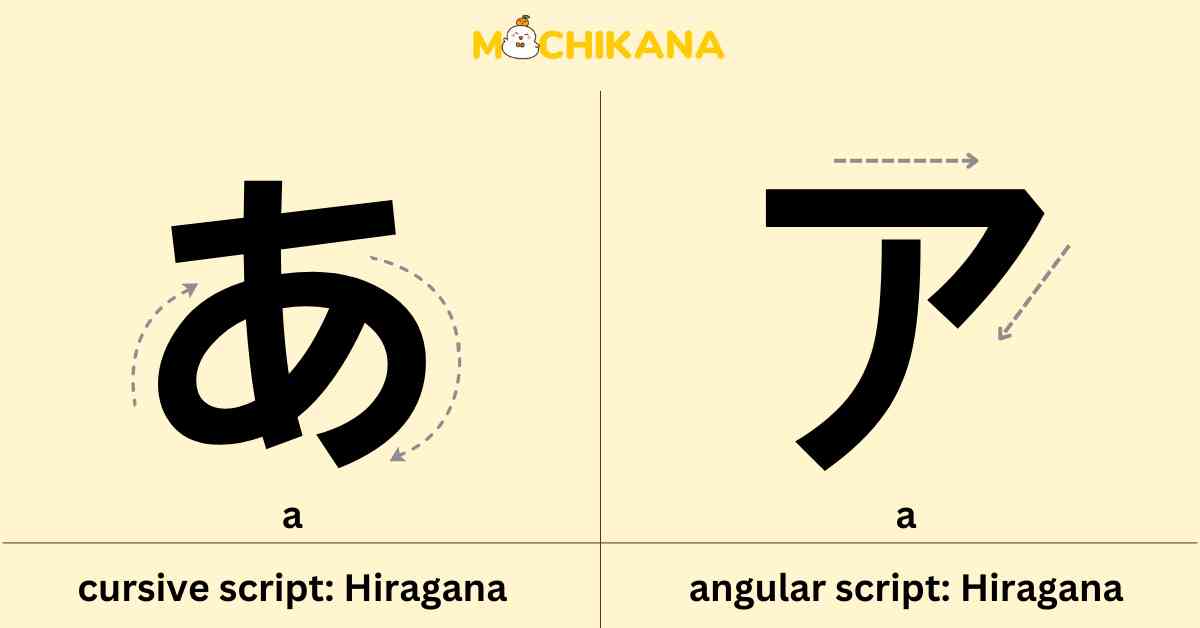
MochiKana’s writing practice feature helps users master Hiragana and Katakana by guiding them through each stroke in the correct order. The interactive exercises offer real-time feedback, ensuring accuracy and reinforcing proper writing habits. This hands-on approach makes it easier to memorize and write Japanese characters correctly.
Kanji
Kanji are logographic characters borrowed from Chinese. Each Kanji represents a word or concept and can have multiple readings and meanings. There are thousands of Kanji characters, but learning the most common ones will help you read and write effectively in Japanese. Kanji are used for nouns, verbs, adjectives, and names.
Learn How to Write All Japanese Scripts
Starting with Each Line
When learning to write Japanese, it’s crucial to understand the basic structure of each script. Here’s a step-by-step guide for the five vowel sounds: a, i, u, e, o.

Hiragana
1. あ (a): Start with a horizontal line from left to right, followed by a vertical line from top to bottom intersecting the horizontal line, and finish with a small curve to the right.

2. い (i): Write a short diagonal line from the top left to the bottom right, then a longer vertical line with a slight curve to the left.
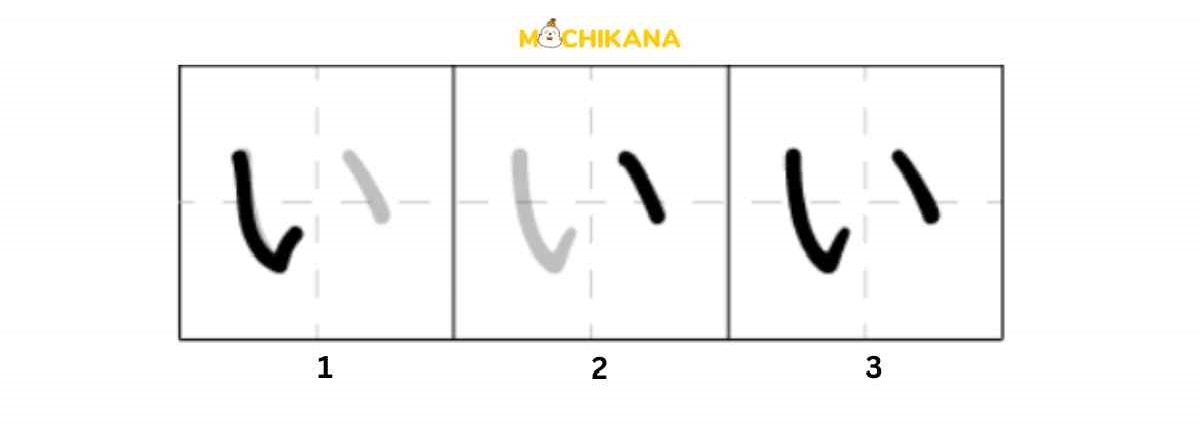
3. う (u): Begin with a small horizontal line, followed by a larger vertical curve and a small hook at the bottom.
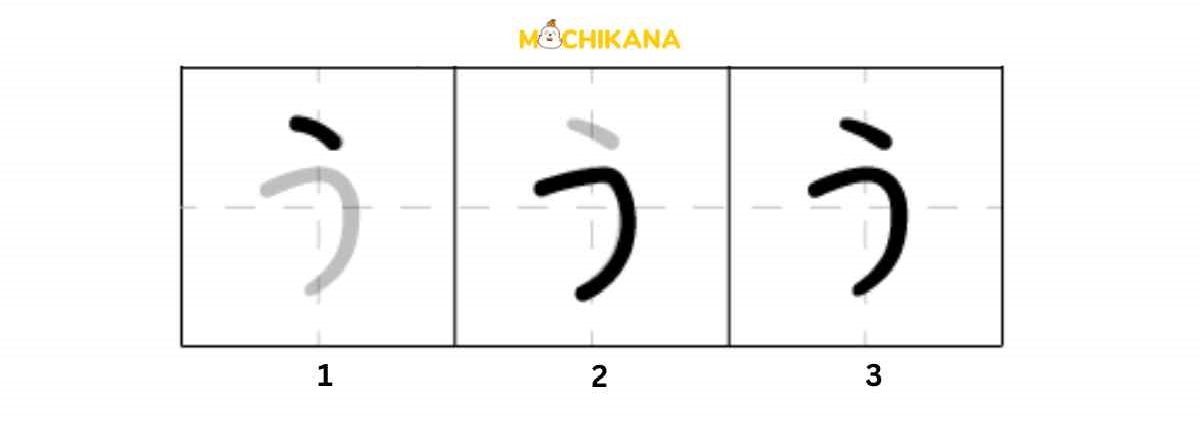
4. え (e): Start with a horizontal line, then a vertical line intersecting it, and finish with a small curve to the right.
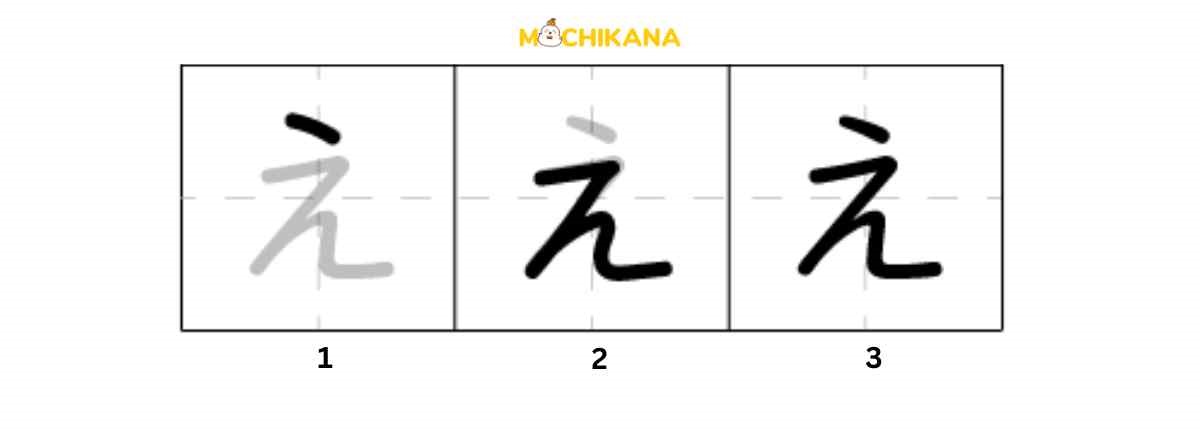
5. お (o): Write a vertical line, followed by a horizontal line intersecting it, and finish with a small hook at the bottom.
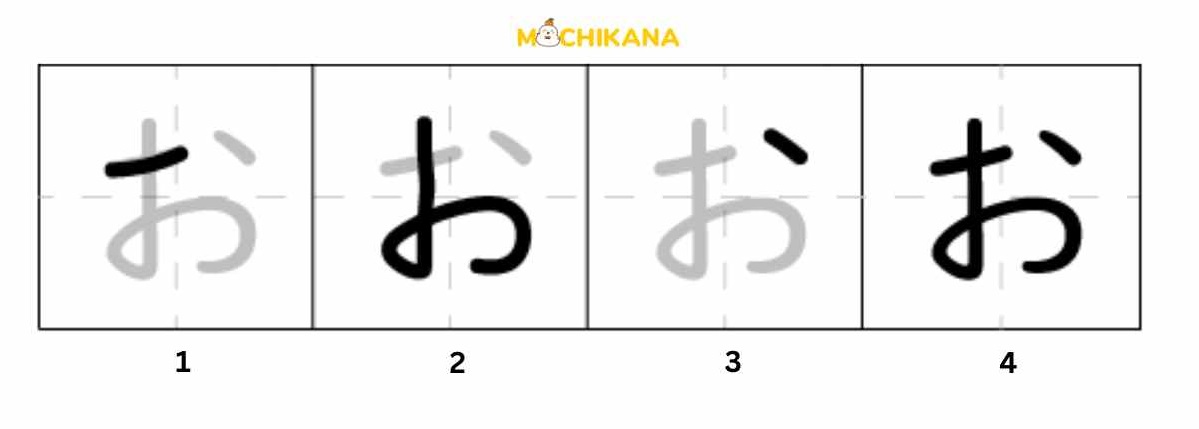
Katakana
- ア (a): Start with a horizontal line, then a vertical line intersecting it, and finish with a short diagonal stroke.
- イ (i): Write a short diagonal line from top left to bottom right, then a longer vertical line.
- ウ (u): Begin with a short diagonal line, followed by a horizontal line intersecting it, and finish with a vertical stroke.
- エ (e): Start with a horizontal line, then a vertical line intersecting it, and finish with a short horizontal stroke to the right.
- オ (o): Write a horizontal line, then a vertical line intersecting it, and finish with a diagonal stroke at the bottom.
Kanji
- 山 (yama, mountain): Write a vertical line, then two shorter vertical lines on either side, and connect them with three horizontal lines.
- 日 (hi, day/sun): Start with a horizontal line, followed by two vertical lines intersecting it, and finish with two more horizontal lines inside the vertical ones.
- 木 (ki, tree): Write a horizontal line, followed by a longer vertical line intersecting it, and finish with two diagonal lines extending from the vertical line.
- 川 (kawa, river): Start with three vertical lines, the middle one being the longest, and connect them with short horizontal lines.
- 田 (ta, field): Write a vertical line, followed by a horizontal line intersecting it, and finish with two shorter horizontal lines inside the vertical one.
Mind the Shape
Pay close attention to the shape of each character. Japanese characters have specific proportions and forms that need to be maintained for them to be recognized correctly. Practice writing each character slowly and carefully, focusing on getting the shapes right before speeding up.
Stroke Orders are Important
Stroke order is a critical aspect of writing Japanese. Each character has a specific sequence in which the strokes should be written. Following the correct stroke order ensures that your writing is legible and aligns with traditional Japanese calligraphy practices.
Basic Stroke Order Rules
- Top to Bottom ↓: Write strokes from top to bottom.
- Left to Right →: Write strokes from left to right.
- Horizontal before Vertical: In characters with both horizontal and vertical strokes, write the horizontal strokes first.
- Outside before Inside: Write the outer strokes before the inner strokes.
- Close the Enclosure Last: For characters with an enclosing stroke, write the enclosing stroke last.
Tips to Learn and Practice
Use a Good Textbook
“Kananyumon” is an excellent textbook for beginners. It provides clear explanations of each character, examples, and practice exercises. Using a structured textbook helps you systematically learn and practice the scripts.
Mnemonics
Mnemonics are a great way to remember the shapes and sounds of characters. Create visual or story-based associations for each character to make them more memorable. For example, you might remember く (ku) in Hiragana by imagining it as a “ku” sound a bird makes.
Spaced Repetition System (SRS)
Spaced repetition is a powerful technique for memorization. Use an SRS app to practice writing characters regularly. The app will show you characters at increasing intervals, helping to reinforce your memory over time.
Apps
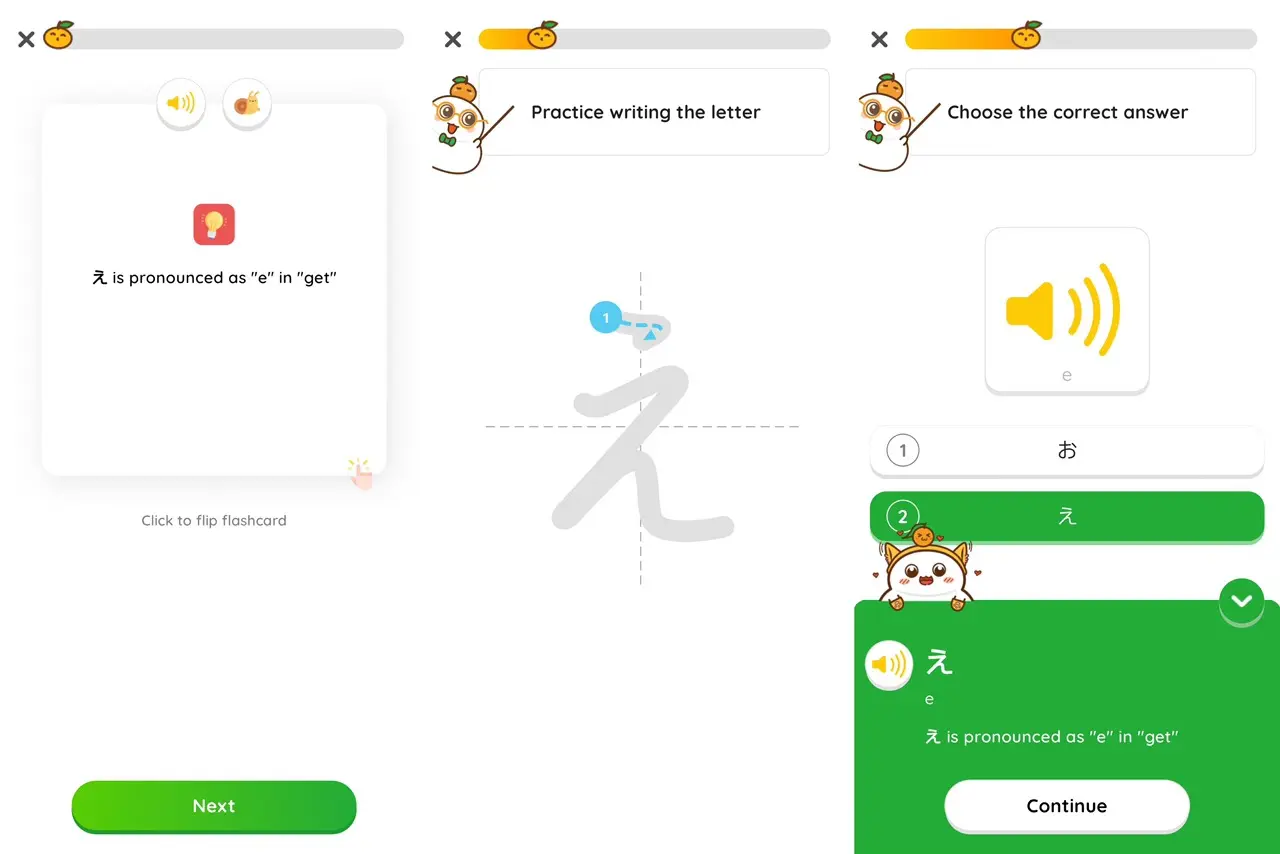
“MochiKana” is a fantastic app designed specifically for learning Hiragana and Katakana. It combines mnemonics and SRS to help you learn the characters quickly and efficiently. The app also includes quizzes and games to make the learning process fun and engaging.
Practice Writing
Regular practice is key to mastering Japanese writing. Dedicate a few minutes each day to practice writing characters. Use grid paper to help maintain proper proportions and spacing. Writing by hand helps reinforce muscle memory and improves your ability to recall characters.
Flashcards
Create physical or digital flashcards to test your knowledge. Review them daily to reinforce your memory. Flashcards are an excellent tool for quick and effective revision.
Read Japanese Texts
Start reading simple Japanese texts, such as children’s books or language learning materials. This will help you see Hiragana, Katakana, and Kanji in context and improve your reading skills.
Conclusion
In conclusion, learning how to write Japanese involves mastering Hiragana, Katakana, and Kanji. Understanding the purpose and structure of each script, following correct stroke orders, and practicing regularly are essential steps in becoming proficient. Use resources like “Kananyumon,” mnemonics, SRS, and apps like “MochiKana” to make the learning process effective and enjoyable. Happy writing!
FAQs
What is the correct way to write in Japanese?
Japanese text is written using a combination of three writing systems: Kanji (characters borrowed from Chinese), Hiragana (syllabary used for native Japanese words), and Katakana (syllabary used for foreign words and names). Typically, Kanji is used for nouns, verbs, and adjectives, while Hiragana is useful for grammatical elements and native Japanese words, and Katakana is used for loanwords and foreign names. Japanese text is often written vertically from top to bottom, but horizontal writing from left to right is also common, especially in modern contexts.
How do I write my name in Japan?
To write your name in Japanese, you would typically use Katakana, which is used for foreign names. You would need to transliterate your name into Japanese phonetics. For example, if your name is “John,” it would be written as ジョン (Jon) in Katakana. The exact Katakana representation may vary depending on the pronunciation of your name.
What are the ABC’s in Japanese?
Japanese does not use the Latin alphabet (ABC) in its standard writing system. Instead, Japanese uses three scripts: Kanji, Hiragana, and Katakana. However, in Japanese education and language learning, the Latin alphabet is sometimes used for teaching purposes or to represent foreign words. The Japanese alphabet equivalents to ABC are called “Romanji” (Roman letters used to transcribe Japanese sounds) and are used primarily for learning and pronunciation purposes.

